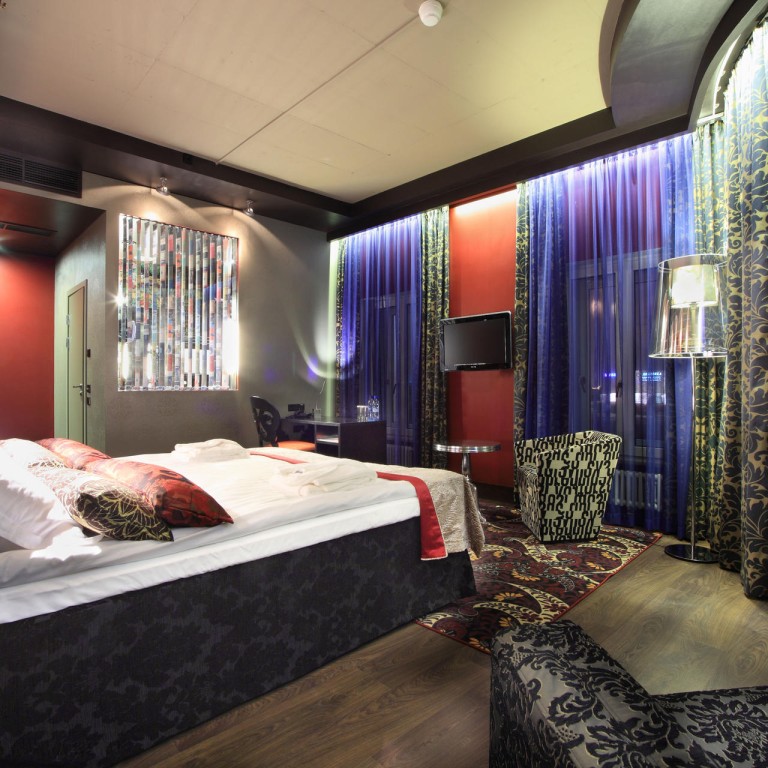
Swedish talent showcased in Hong Kong's Business of Design Week
Scandinavian designers show that a holistic approach can lead to commercial success
Tasked with reinvigorating Scandinavian Airlines' iconic brand, multi-award-winning Swedish architect Thomas Eriksson says his first thought was that the airline's wet wipe packet should be considered as important as the aircraft lounge design.
"Scandinavian Airlines is a great example of how we combine identity and design around Scandinavian values and materials and traditions," Eriksson says. "We considered every detail, from the ground vehicles to the airplane livery and graphics. Our philosophy is that we shouldn't add anything that we don't have a rationale for."
Swedish design has long been recognised for an emphasis on minimalist functional beauty along with innovation and sustainable living, values that have translated into worldwide success for companies as varied as H&M and Ikea, and making it an obvious choice as the lead "partner" at Hong Kong's annual Business of Design Week (BODW), which began on Monday.
The week-long series of exhibitions and presentations by designers such as Niklas Malmqvist, one of the creative masterminds behind the popular Candy Crush game, Japanese architect Shigeru Ban and Red Dot Design Award-winner David Jia is expected to draw a crowd of about 100,000, a tenfold increase from when the event last collaborated with Sweden in 2004.
Edmund Lee, an executive director of the organiser, Hong Kong Design Centre (HKDC), believes that countries with a strong design culture like Sweden offer useful lessons concerning how to connect effectively within a modern global economy.
"This requires a new mindset, new knowledge and new skills over and beyond our traditional knowledge and proven business competence," Lee says. "By working with Sweden, we can all be inspired by their business leaders and design masters in creating value through design, brand and innovation."
"The world is changing fast in some aspects but when it comes to the way we work and think, it takes time and many are still stuck in old ways," says Krister Torssell, the chief executive of Sweden's leading design and innovation agency Veryday.
Torssell, who, on Friday, will present his thoughts on cutting-edge design innovation, is keen to use BODW as an opportunity to dismiss the common misunderstanding that people-driven innovation slows down the design process.
"It is slow only if you don't do it in the right way," he says. "A key to our success is that we focus on users and stakeholders and at the same time look holistically at the situation. You get much better information and make decisions faster because you engage everyone at the same time."
Veryday's projects include an award-winning hospital-grade ventilator that confirms how design creates commercial success.
"We considered the emotions and feelings of family members and designed to create a feeling of trust in the ventilator. It is now number one on the market because of the design," says Torssell.
Veryday's Shanghai office has seen significant interest from major Chinese companies looking to design for other markets and that recognise the value in creating an experience of a brand rather than simply communicating a marketing message.
"A traditional Swedish focus on fair values, respect for individuals and their needs defines our design," says Stylt Trampoli creative director Erik Nissen Johansen, whose design agency specialises in creating hospitality spaces using a story-telling narrative that he believes is relevant to all cultures.
"The technique is similar to the film industry; we create the script before the design. Our approach is planning for the reason why people should love a place. For instance, in a hotel project in Russia [for the Radisson Sonya], we based the design around Dostoyevsky's It is about creating an emotional engagement."
Zound Industries founder Oscar Axhede says the trademark Swedish approach of staying close to the user experience is critical in today's global competitive design world. The firm has become a household name, thanks to its colourful Urbanears headphones and innovative branding, most famously hosting launches of a model of headphones featuring washable parts in a laundromat and a Bingo contest at which pigeon droppings determined the winners.
"Good design is as little design as possible," says Axhede. "But the idea of form following function with nothing extra added is not just for Sweden. We have been very successful in [mainland] China and Hong Kong."
"It is so important to talk about why we do what we do," says Eriksson of Swedish designers. "BODW is a good start but to make it even more relevant we should somehow think about strategies of exchange that go beyond meeting just once a year."
Torssell agrees. "An architect sitting next to an industrial designer or artist at BODW is much better than an architect next to an architect. This is the most exciting part of this event. We have all sorts of people from around the world and Sweden and that is what makes it so inspiring."

